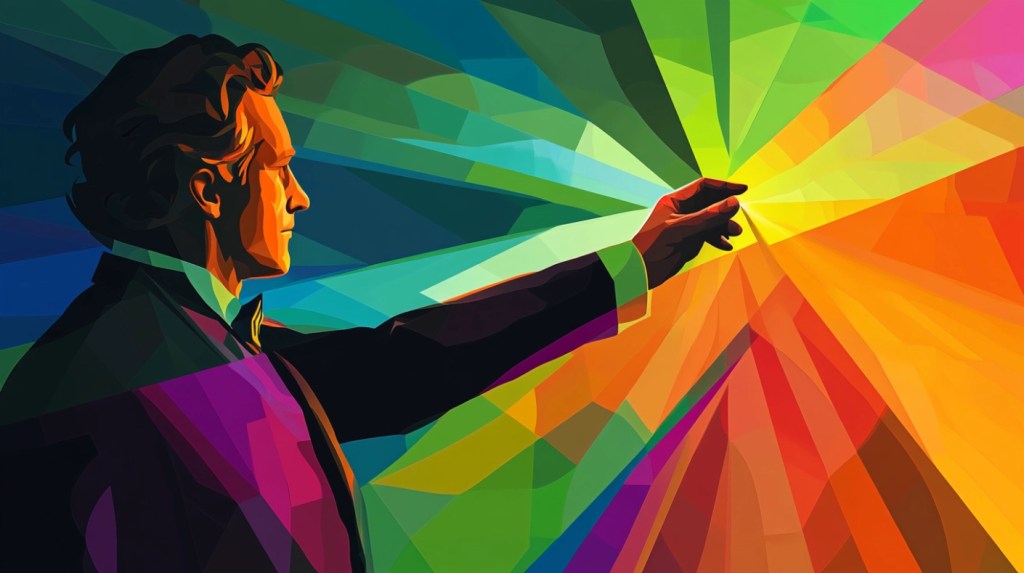Join our daily and weekly newsletters for the latest updates and exclusive content on industry-leading AI coverage. Learn More
Researchers at Archetype AI have developed a foundational AI model capable of learning complex physics principles directly from sensor data, without any pre-programmed knowledge. This breakthrough could significantly change how we understand and interact with the physical world.
The model, named Newton, demonstrates an unprecedented ability to generalize across diverse physical phenomena, from mechanical oscillations to thermodynamics, using only raw sensor measurements as input. This achievement, detailed in a paper released today, represents a major advance in artificial intelligence’s capacity to interpret and predict real-world physical processes.
“We’re asking if AI can discover the laws of physics on its own, the same way humans did through careful observation and measurement,” said Ivan Poupyrev, co-founder of Archetype AI, in an exclusive interview with VentureBeat. “Can we build a single AI model that generalizes across diverse physical phenomena, domains, applications, and sensing apparatuses?”
From pendulums to power grids: AI’s uncanny predictive powers
Trained on over half a billion data points from diverse sensor measurements, Newton has shown remarkable versatility. In one striking demonstration, it accurately predicted the chaotic motion of a pendulum in real-time, despite never being trained on pendulum dynamics.
The model’s capabilities extend to complex real-world scenarios as well. Newton outperformed specialized AI systems in forecasting citywide power consumption patterns and predicting temperature fluctuations in power grid transformers.
“What’s remarkable is that Newton had not been specifically trained to understand these experiments — it was encountering them for the first time and was still able to predict outcomes even for chaotic and complex behaviors,” Poupyrev told VentureBeat.
Adapting AI for industrial applications
Newton’s ability to generalize to entirely new domains could significantly change how AI is deployed in industrial and scientific applications. Rather than requiring custom models and extensive datasets for each new use case, a single pre-trained foundation model like Newton might be adapted to diverse sensing tasks with minimal additional training.
This approach represents a significant shift in how AI can be applied to physical systems. Currently, most industrial AI applications require extensive custom development and data collection for each specific use case. This process is time-consuming, expensive, and often results in models that are narrowly focused and unable to adapt to changing conditions.
Newton’s approach, by contrast, offers the potential for more flexible and adaptable AI systems. By learning general principles of physics from a wide range of sensor data, the model can potentially be applied to new situations with minimal additional training. This could dramatically reduce the time and cost of deploying AI in industrial settings, while also improving the ability of these systems to handle unexpected situations or changing conditions.
Moreover, this approach could be particularly valuable in situations where data is scarce or difficult to collect. Many industrial processes involve rare events or unique conditions that are challenging to model with traditional AI approaches. A system like Newton, which can generalize from a broad base of physical knowledge, might be able to make accurate predictions even in these challenging scenarios.
Expanding human perception: AI as a new sense
The implications of Newton extend beyond industrial applications. By learning to interpret unfamiliar sensor data, AI systems like Newton could expand human perceptual capabilities in new ways.
“We have sensors now that can detect aspects of the world humans can’t naturally perceive,” Poupyrev told VentureBeat. “Now we can start seeing the world through sensory modalities which humans don’t have. We can enhance our perception in unprecedented ways.”
This capability could have profound implications across a range of fields. In medicine, for example, AI models could help interpret complex diagnostic data, potentially identifying patterns or anomalies that human doctors might miss. In environmental science, these models could help analyze vast amounts of sensor data to better understand and predict climate patterns or ecological changes.
The technology also raises intriguing possibilities for human-computer interaction. As AI systems become better at interpreting diverse types of sensor data, we might see new interfaces that allow humans to “sense” aspects of the world that were previously imperceptible. This could lead to new tools for everything from scientific research to artistic expression.
Archetype AI, a Palo Alto-based startup founded by former Google researchers, has raised $13 million in venture funding to date. The company is in discussions with potential customers about real-world deployments, focusing on areas such as predictive maintenance for industrial equipment, energy demand forecasting, and traffic management systems.
The approach also shows promise for accelerating scientific research by uncovering hidden patterns in experimental data. “Can we discover new physical laws?” Poupyrev mused. “It’s an exciting possibility.”
“Our main goal at Archetype AI is to make sense of the physical world,” Poupyrev told VentureBeat. “To figure out what the physical world means.”
As AI systems become increasingly adept at interpreting the patterns underlying physical reality, that goal may be within reach. The research opens new possibilities – from more efficient industrial processes to scientific breakthroughs and novel human-computer interfaces that expand our understanding of the physical world.
For now, Newton remains a research prototype. But if Archetype AI can successfully bring the technology to market, it could usher in a new era of AI-powered insight into the physical world around us.
The challenge now will be to move from promising research results to practical, reliable systems that can be deployed in real-world settings. This will require not only further technical development, but also careful consideration of issues like data privacy, system reliability, and the ethical implications of AI systems that can interpret and predict physical phenomena in ways that might surpass human capabilities.
Source link

